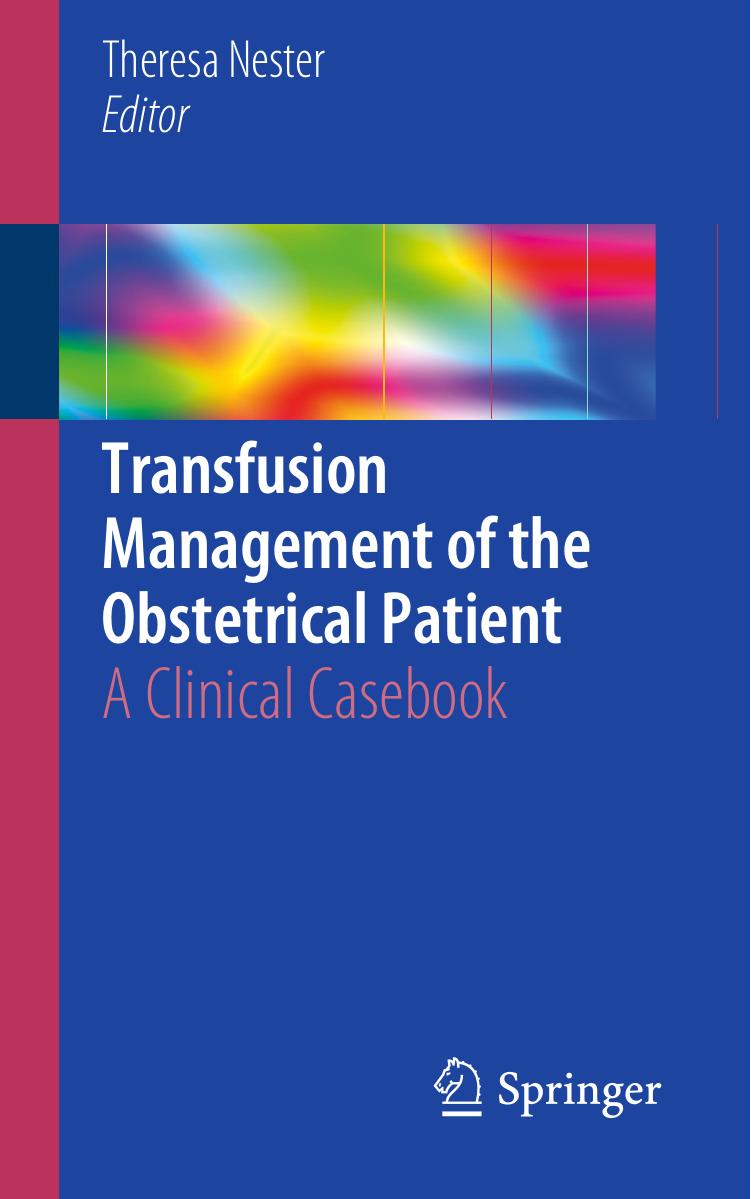Transfusion Management of the Obstetrical Patient by Theresa Nester

Author:Theresa Nester
Language: eng
Format: epub, pdf
Publisher: Springer International Publishing, Cham
Do You Agree or Disagree with the Management?
I agree with the product selection ; I disagree with issuing the units in a single cooler. Issuing the blood for two different patients in one transport container could lead to a mix up of units, and—in this case—administration of non-irradiated red cells to the baby.
Laboratory Testing and Interpretation/Transfusion Medicine Principles
When a mother presents with a red cell antibody, if time for the identification of the antibody can be done and the antibody is found to be capable of causing hemolysis, the mother and baby should be issued antigen-negative blood. Maternal antibodies of the IgG class can cross the placenta into the fetal circulation. Hemolytic disease of the fetus and newborn (HDFN) is the clinical condition caused by maternal red cell antibodies lysing fetal/newborn RBC when baby expresses the cognate red cell antigen. Antibodies to the Rhesus blood group , of which little c belongs, are the most common red cell alloantibodies indicated in HDFN. While there is not enough information given to know if the pregnancy is affected by HDFN, it is safe to assume that the maternal anti-c has crossed the placenta and is present in the baby’s circulation.
Neonatal product selection should consider ABO/Rh compatible products , typically O RhD-negative RBCs [1]. In fact, RhD-positive red cells would be acceptable because babies are not capable of mounting an antibody response against the RhD antigen for the first few months of life. In this particular case, the transfusion service technologist is selecting an RhD-positive unit in order to locate a unit that is c-negative. With regard to blood group genetics, the RhD and RhCE genes are closely linked, such that individuals inherit a haplotype [2]. Several amino acid changes within the CE protein determine whether one inherits C, c, E, or e as part of the haplotype. In terms of incidence in the population, an RhD-negative individual is very likely to have the following haplotype combination: ce/ce. Finding a red cell unit that has the combination that is negative for both D and c (Ce/Ce) is very difficult (Table 13.1)[2]. Thus in order to quickly locate a unit for the baby that is negative for the c antigen, an RhD-positive unit will be selected. The cellular products, RBCs and platelets, should be irradiated due to an immature immune system and risk of transfusion associated GVHD.Table 13.1 Red cell units negative for the c antigen
Download
Transfusion Management of the Obstetrical Patient by Theresa Nester.pdf
This site does not store any files on its server. We only index and link to content provided by other sites. Please contact the content providers to delete copyright contents if any and email us, we'll remove relevant links or contents immediately.
When Breath Becomes Air by Paul Kalanithi(7256)
Why We Sleep: Unlocking the Power of Sleep and Dreams by Matthew Walker(5637)
Paper Towns by Green John(4165)
The Immortal Life of Henrietta Lacks by Rebecca Skloot(3821)
The Sports Rules Book by Human Kinetics(3582)
Dynamic Alignment Through Imagery by Eric Franklin(3483)
ACSM's Complete Guide to Fitness & Health by ACSM(3462)
Kaplan MCAT Organic Chemistry Review: Created for MCAT 2015 (Kaplan Test Prep) by Kaplan(3419)
Introduction to Kinesiology by Shirl J. Hoffman(3297)
Livewired by David Eagleman(3117)
The River of Consciousness by Oliver Sacks(2989)
Alchemy and Alchemists by C. J. S. Thompson(2909)
The Death of the Heart by Elizabeth Bowen(2897)
Descartes' Error by Antonio Damasio(2728)
Bad Pharma by Ben Goldacre(2724)
The Gene: An Intimate History by Siddhartha Mukherjee(2489)
Kaplan MCAT Behavioral Sciences Review: Created for MCAT 2015 (Kaplan Test Prep) by Kaplan(2486)
The Fate of Rome: Climate, Disease, and the End of an Empire (The Princeton History of the Ancient World) by Kyle Harper(2431)
The Emperor of All Maladies: A Biography of Cancer by Siddhartha Mukherjee(2427)
